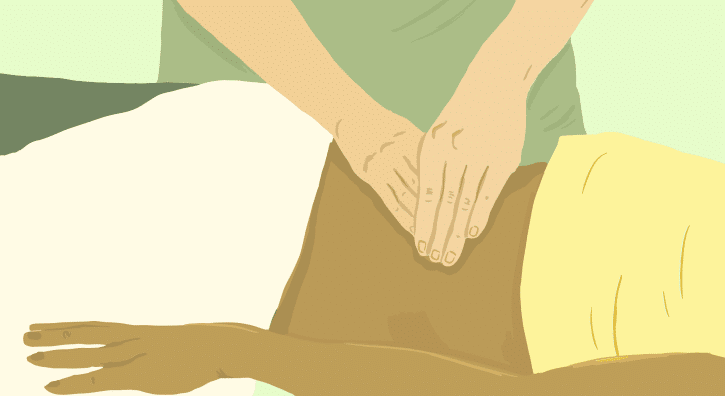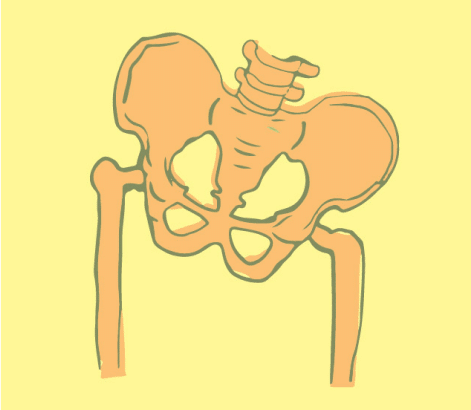

Symptoms
- Common signs of pelvic pain include sensations such as tingling, discomfort, burning, or aching in the vulvar, vaginal, perineal, or anal areas
- Pain during intimacy, irritation from tight-fitting clothes, and pain when seated are frequently reported by affected women
- Exercising may provoke or worsen pelvic pain symptoms
- Pelvic discomfort is often accompanied by bladder-related problems such as frequent urination, leakage, or pain while urinating
- Digestive symptoms like abdominal bloating, gas, or constipation may also occur
- Symptoms can be triggered by penetrative acts or simply show up without warning
- For some, symptoms are constant; for others, they appear off and on

Symptoms
- Common signs of pelvic pain include sensations such as tingling, discomfort, burning, or aching in the vulvar, vaginal, perineal, or anal areas
- Pain during intimacy, irritation from tight-fitting clothes, and pain when seated are frequently reported by affected women
- Exercising may provoke or worsen pelvic pain symptoms
- Pelvic discomfort is often accompanied by bladder-related problems such as frequent urination, leakage, or pain while urinating
- Digestive symptoms like abdominal bloating, gas, or constipation may also occur
- Symptoms can be triggered by penetrative acts or simply show up without warning
- For some, symptoms are constant; for others, they appear off and on

Associated Diagnoses
Diagnoses such as Endometriosis, Vulvodynia, Interstitial Cystitis/Painful Bladder Syndrome, Pudendal Neuralgia, Lichen Sclerosus, Lichen Planus, and Irritable Bowel Syndrome are associated with pelvic pain and pelvic floor dysfunction.


Causes of Pelvic Pain
- Repetitive vaginal and/or bladder infections and/or gynecologic, urologic, dermatologic or gastrointestinal conditions
- The majority of women with pelvic pain have pelvic floor dysfunction
- Prescription medications such as oral contraceptives, acne medications, and hormonal suppressive therapies for diseases such as Endometriosis and Polycystic Ovarian Syndrome (PCOS)
- Surgical trauma (childbirth, pelvic organ prolapse repair, hysterectomy)
- Orthopedic injuries or traumas
- Biomechanical or structural dysfunction (hip dysfunction, sacro-iliac joint dysfunction, piriformis syndrome, scoliosis, leg length discrepancy)
- Vaginal childbirth
- Menopause
- Genital cutting or genital mutilation
Symptoms
- Repetitive vaginal and/or bladder infections and/or gynecologic, urologic, dermatologic or gastrointestinal conditions
- The majority of women with pelvic pain have pelvic floor dysfunction
- Prescription medications such as oral contraceptives, acne medications, and hormonal suppressive therapies for diseases such as Endometriosis and Polycystic Ovarian Syndrome (PCOS)
- Surgical trauma (childbirth, pelvic organ prolapse repair, hysterectomy)
- Orthopedic injuries or traumas
- Biomechanical or structural dysfunction (hip dysfunction, sacro-iliac joint dysfunction, piriformis syndrome, scoliosis, leg length discrepancy)
- Vaginal childbirth
- Menopause
- Genital cutting or genital mutilation

Diagnostic Challenges
For many women in Temecula, navigating the path to a proper diagnosis for pelvic pain can be a long and confusing process—taking as much as five years or more. Endometriosis cases often go undiagnosed for up to 11 years. The reason? Pelvic floor dysfunction can present symptoms that are easily mistaken for bladder infections, yeast infections, or STIs. Because these conditions share overlapping signs, pelvic floor-related issues frequently go undetected. Women often don’t realize the pelvic floor could be involved until they’ve exhausted other medical options—only then learning that physical and occupational therapy might have been the right solution all along.
Diagnostic Challenges
For many women in Temecula, navigating the path to a proper diagnosis for pelvic pain can be a long and confusing process—taking as much as five years or more. Endometriosis cases often go undiagnosed for up to 11 years. The reason? Pelvic floor dysfunction can present symptoms that are easily mistaken for bladder infections, yeast infections, or STIs. Because these conditions share overlapping signs, pelvic floor-related issues frequently go undetected. Women often don’t realize the pelvic floor could be involved until they’ve exhausted other medical options—only then learning that physical and occupational therapy might have been the right solution all along.
Treatment:
How We Can Help You

If you’re a woman in Temecula who has been quietly enduring pelvic pain, know that you don’t have to go through it alone. A pelvic floor physical and occupational therapists who specializes in pelvic pain can offer an in-depth evaluation to understand what you’ve been experiencing. We start by discussing your medical history, previous diagnoses, what treatments you’ve tried, and how you responded to them. Many women in Temecula share that they’ve felt dismissed or misdiagnosed before getting to us. The physical exam includes a detailed assessment of your pelvic floor muscles, soft tissue, joint alignment, nerve sensitivity, and movement mechanics. Your therapist will walk you through the findings and develop a structured treatment plan tailored to your body and goals. Sessions are typically scheduled 1–2 times a week for around three months, supported by a personalized home program. We also coordinate care with other professionals involved in your case. Our mission is to help you find meaningful relief and restore your quality of life.

Treatment:
How We Can Help You
If you’re a woman in Temecula who has been quietly enduring pelvic pain, know that you don’t have to go through it alone. A pelvic floor physical and occupational therapists who specializes in pelvic pain can offer an in-depth evaluation to understand what you’ve been experiencing. We start by discussing your medical history, previous diagnoses, what treatments you’ve tried, and how you responded to them. Many women in Temecula share that they’ve felt dismissed or misdiagnosed before getting to us. The physical exam includes a detailed assessment of your pelvic floor muscles, soft tissue, joint alignment, nerve sensitivity, and movement mechanics. Your therapist will walk you through the findings and develop a structured treatment plan tailored to your body and goals. Sessions are typically scheduled 1–2 times a week for around three months, supported by a personalized home program. We also coordinate care with other professionals involved in your case. Our mission is to help you find meaningful relief and restore your quality of life.
How Can We Help You?
Use the form below to reach out with any inquiries or feedback. Don’t forget to provide your email address so we can reply to your message. Your personal information will be kept secure and private at all times.

Join The Newsletter. Win a copy of our book, “Pelvic Pain Explained!”
We love getting to know our website visitors. Please tell us a little bit about yourself and get the latest info via PHRC e-newsletter!
*Subscribers automatically eligible to win our book, “Pelvic Pain Explained.”


